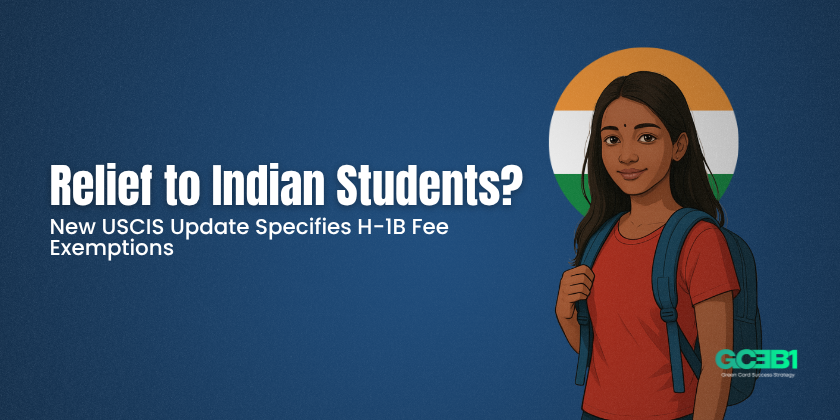What Types of EB-1A Media Coverage Qualify for the USCIS Requirements?
.png)
When applying under the EB-1A category, media coverage often becomes a decisive piece of evidence. The U.S. Citizenship and Immigration Services (USCIS) explicitly recognizes media mentions as a criterion that demonstrates a candidate’s “extraordinary ability” in their field. However, not all media coverage is created equal. Applicants must carefully understand which types of coverage qualify, how USCIS evaluates them, and what strategies can make their case stronger.
In this blog, we will explore the kinds of EB-1A media coverage USCIS accepts. We will also highlight the common pitfalls and explain how applicants can position this evidence effectively.
Why media coverage matters in EB-1A petitions
Under 8 C.F.R. § 204.5(h)(3)(iii) of the USCIS guideline, one way to prove extraordinary ability is by providing evidence of published material about the applicant in major trade publications, professional journals, or mainstream media outlets. This requirement is designed to confirm that the applicant’s work has gained recognition beyond their immediate circle.
USCIS treats credible and independent coverage as external validation of an applicant’s prominence. In other words, it is not enough to say you are extraordinary; someone else must say it too on a respected platform.
Types of media coverage that qualify
National and international News Outlets
Coverage in widely recognized publications such as The New York Times, The Wall Street Journal, The Guardian, or The Times of India carries significant weight. USCIS gives preference to outlets that have substantial circulation and are recognized as authoritative in general reporting.
Example: A software engineer featured in Forbes for leading a breakthrough in AI is more likely to impress adjudicators than an appearance in a small, local magazine.
Industry-specific publications
Coverage in professional trade journals, peer-reviewed magazines, or industry-specific outlets can be just as compelling as mainstream press. For scientists, mentions in journals like Nature Biotechnology or IEEE Spectrum hold authority. For business executives, features in Harvard Business Review or TechCrunch provide strong evidence of influence within the field. You should aim to appear in your own industry-specific niche.
Television, radio, and digital media
Major broadcast appearances on channels like CNN, BBC, or CNBC, or interviews with widely syndicated radio shows, can qualify as valid evidence. Increasingly, digital-first platforms such as Bloomberg Online or high-traffic industry podcasts are also accepted by USCIS, provided they meet credibility and reach standards.
Reputable regional media
While national and international recognition is ideal, high-quality regional media may also count if the outlet is well-established and the coverage emphasizes the applicant’s impact. For example, a major metro newspaper like The San Francisco Chronicle carries more weight than a small-town newsletter.
What does not qualify
- Company blogs or newsletters: These are viewed as self-promotional.
- Paid or sponsored media: Advertorials, sponsored content, or PR agency placements undermine credibility.
- Social media mentions: Even if viral, tweets or Instagram posts are not considered formal media coverage.
- Unverified online content: USCIS is skeptical of unregulated online platforms with no editorial oversight.
Strategies to strengthen your case
- Document with evidence: Always include the original article (or transcript), the date, and circulation figures of the publication.
- Provide translations: If the media coverage is in a language other than English, certified translations are required.
- Highlight influence: Annotate the article to show where your name, work, or achievements are mentioned.
- Diversify sources: Present coverage across different platforms: print, online, and broadcast.
- Show pattern of recognition: Multiple mentions across outlets demonstrate sustained visibility, not a one-off occurrence.
Media coverage as a strategic asset
EB-1A media coverage is a significant proof of impact. At GCEB1, we guide professionals on how to evaluate their media profile, identify qualifying coverage, and supplement it with the right supporting evidence. Smart use of media coverage is an important step you simply can’t miss. As EB-1 consultants, we help you isolate and identify all the media-worthy nuggets of achievements. Moreover, we make your success story speak in terms of what USCIS looks for. Reach out to us to know how we can help you out.
References
- U.S. Citizenship and Immigration Services. Employment-Based Immigration: First Preference EB-1. USCIS Policy Manual. Accessed August 30, 2025.
- Code of Federal Regulations. 8 C.F.R. § 204.5(h)(3). U.S. Government Publishing Office.
- Fragomen, Austin T. Immigration Fundamentals: A Guide to Law and Practice. New York: Practising Law Institute, 2023.
- “Matter of Skirball Cultural Center.” 25 I&N Dec. 799 (AAO 2012).







.png)


.png)
.webp)
.webp)
.webp)